Written by Scott Wilson
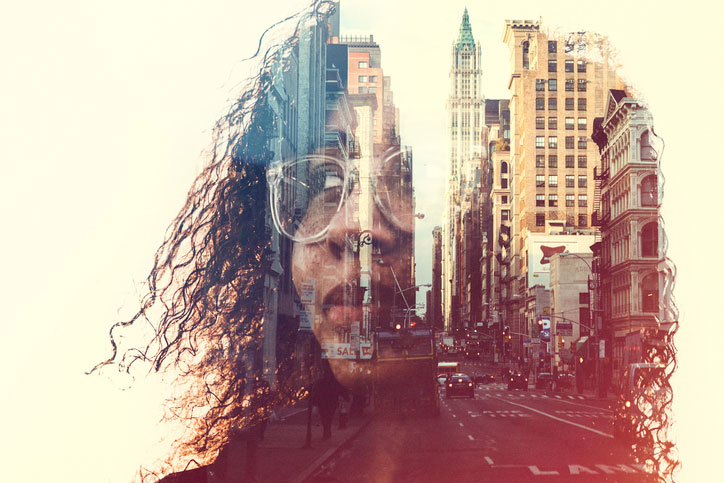
What is cultural humility in social work, and why is it so important in New York?
Cultural competence is a big watchword in some circles today, but it’s so baked in to social work that the profession has never needed a term for it. From the earliest days of professional social work, it’s been clear that it takes a special touch to connect with populations that you don’t belong to, but are attempting to serve.
That’s the whole idea behind New York settlement houses like University Settlement, which plunked upper class social work school graduates down to live shoulder to shoulder with residents of lower income immigrant neighborhoods. And it’s why, even today, cultural competency training is an important part of social work degree programs.
Increasingly, cultural competency is being rebranded as cultural humility, reflecting the idea that the lived experience of other cultures is something to respect even if you can never fully know them.
But your personal journey to developing cultural competency will never end. So it’s a good idea to get familiar with the resources available in New York for managing and increasing your own adaptability in cultural engagement.
New York May Be the Best Place in the World To Build Cultural Competency
New York is a place where cultural diversity emerges completely organically in every amazing and inspiring form imaginable. By many measures, New York City is the most diverse city on the planet, with as many as 800 different languages or dialects actively spoken and an immigrant population that approaches 40 percent.
Increasing Numbers of Social Workers Come With Cultural Humility Already on the Resume
 To some extent, the concept of cultural humility in social work assumes a scenario in which social workers come in to communities to work with people they are inherently unfamiliar with and can never fully acculturate to. Social workers are taught in their degree programs that cultural competency is a lifelong process that is “…never fully realized, achieved, or completed,” in the words of the National Association of Social Workers (NASW).
To some extent, the concept of cultural humility in social work assumes a scenario in which social workers come in to communities to work with people they are inherently unfamiliar with and can never fully acculturate to. Social workers are taught in their degree programs that cultural competency is a lifelong process that is “…never fully realized, achieved, or completed,” in the words of the National Association of Social Workers (NASW).
But that statement seems to overlook the many social workers in New York who come from the very same cultures and neighborhoods they plan to serve.
According to NASW, in a joint survey conducted in 2020 with the Council on Social Work Education, nearly a quarter of social workers today are Black, and 14 percent report Hispanic ethnicity. Another 5 percent are of Asian descent and 1 percent American Indian or Alaska Native. Around 30 percent are LGBTQ. And almost half are the first in their families to graduate from college.
There’s also the reality that America in the 21st Century is a veritable blender of cultures, in which almost all of us find ourselves with streaks of several different social, ethnic, or spiritual traditions.
To be sure, it’s never a bad idea to develop self-awareness and to bring the lessons of cultural competency right down to the individual level. None of us has truly walked a mile in another’s shoes, no matter how similar our backgrounds.
But when your lived experience mirrors that of many of your clients, you come to the job with a built-in edge for making connections with those you will serve.
As a city founded by the Dutch on Native American land and soon flooded with immigrants from every corner of Europe, Africa, and Asia, New York has had culture oozing out of its pores since day one.
In a very real sense, there is no corner of New York that isn’t an ethnic enclave of some kind.
As people from those various origins are inclined to do, many settled here in neighborhoods with their kin and countrymen. Common language, common tradition, common perspectives brought them together.
New York Neighborhoods Offer a Cultural Core That Remains Strong Through the Years
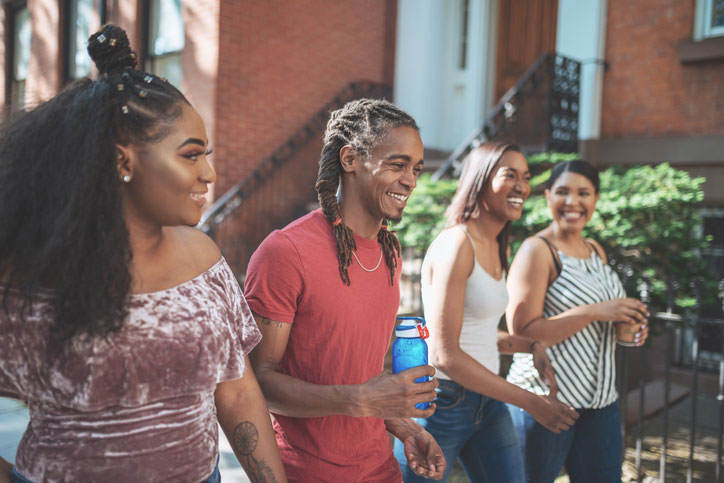
This is what really makes New York unique. As various ethnic and cultural groups have come here, they have retained much of the original traits and traditions that make them unique. Although we’re known as the great melting pot, a stew might be a better metaphor: immigrants in New York both acculturate in part to the dominant American culture, but also bring in their own unique flavor.
The city has also been a focal point for cultural movement with less geographical centers. A vibrant gay and lesbian scene has lead to neighborhoods, and eventually an entire city, full of support for the LGBTQIA2S+ community.
These neighborhood enclaves have evolved over time. Flatbush, for example, was once a white, European neighborhood with a blend of Irish Catholic, Italian, and Jewish immigrants that has since become the center of New York’s thriving West Indian immigrant population. This evolution can even be deceptive—Little Italy is far less an Italian enclave today than Staten Island!
Explore the Enclaves Where You Can Hone Your Cultural Competency as a New York Social Worker
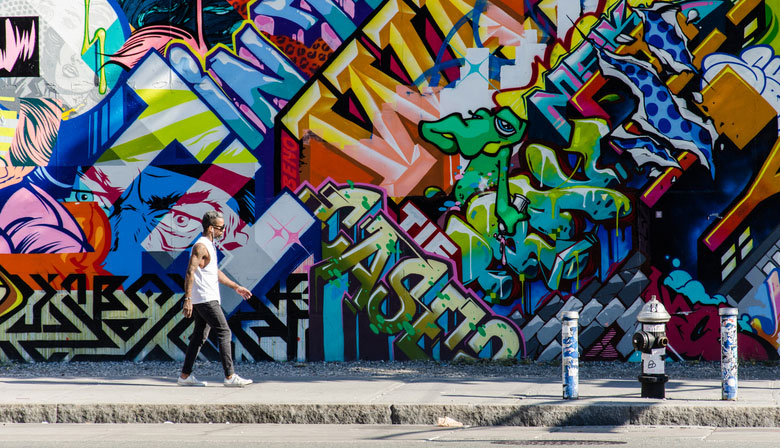
This is by no means an exhaustive list of all the various small and incredible variations of cultural enclaves found in the New York City region. Sometimes you find them in as little as a block, a dozen families who came here from far across the planet bringing their own perspective and unique traditions to American shores. But these are some of the biggest, best established, and most resource-filled neighborhoods in New York for helping social workers hone their cultural competency skills.
Harlem: Black America's Own Metropolis
Maybe the best known neighborhood in New York, Harlem’s rich reputation for fostering Black cultural excellence in entrepreneurship, cuisine, music, arts, theatre, literature, and more makes it an excellent place to introduce yourself to Black culture.
Harlem’s history is written from the echoes of the American Black experience nationwide. Filled with African Americans in the early part of the 20th Century as they fled anti-Black riots in other parts of the city and country, Harlem was majority Black by 1930. Rocked by protests in the Civil Rights era, it was a fulcrum for change in American perspectives on Black America.
This is where the Harlem Renaissance happened and where Malcom X preached of strength and freedom. If you seek an understanding of Black culture in America today, this is where you begin.
Intersectional cultural resources come from organizations like Harlem Center, which delivers resources for Same Gender Loving, Lesbian, Gay, Bisexual, Transgender and Queer individuals and allies from across NYC.
An introduction to the artistic legacy and rich history of Black artists can be found at the Harlem Arts Alliance.
Whether you are new to the city or just coming from outside the neighborhood, a heritage tour can plug you in to the important historic events that have shaped the Black experience from organizations like Harlem Heritage Tours. You will see icons like the Apollo Theater and touch the soul of a truly American culture in the process.
Social workers interested in a more intellectual analysis of the Black experience may spend their time at the New York Public Library’s Schomburg Center for Research in Black Culture on Malcom X Boulevard.
Flatbush, the Crossroads of New York’s Cultural Evolution
The cultural evolution of Flatbush is practically an education in diversity all by itself, a miniature snapshot of the growth of New York over the years written in ethnic strife and change. Once the center of the famed New York Irish/Italian Catholic migrant population, in recent years the lilt of the Caribbean has taken over the streets south of Prospect Park. Immigrants from Haiti and other West Indian countries have come to dominate the area.
This is where Abner Louima was assaulted by the NYPD and where the protests happened that led to the arrest of the officers involved and a landmark settlement for police brutality. Yet it’s also where the Brooklyn Center for the Performing Arts hosted acts as diverse as Gregory Hines, Ray Charles, Itzhak Perlman, Ladysmith Black Mambazo, and the National Dance Theatre Company of Jamaica.
Putting together the highs and the lows you find in Flatbush will help you build a more empathetic, comprehensive picture of the Afro-Caribbean American experience.
The Flatbush Development Commission (now just FDC, with a wider mission to serve all of Brooklyn) supports quality of life, safety, and equity throughout this diverse and energetic community. With after-school programs, housing advocacy, food-insecurity supports, and assistance for the critical web of small businesses that give the neighborhood its character, this is a terrific resource for social workers on the job in the neighborhood. But it’s also a path to getting better acquainted with the rich culture of the area, through resources like the Flatbush Art Map.
No stop in the neighborhood is complete without a check-in at Flatbush Central, a bustling market in the heart of the community where you’ll find both shoppers and vendors reflecting the unique character of Flatbush.
You will get a more intimate picture of the neighborhood’s families and their needs through the East Flatbush Community Partnership. A coalition sponsored by NYC ACS and the Jewish Child Care Association, the Partnership runs a variety of programs that provide neighborhood kids with resources while strengthening relationships within the community.
Ellis Island: The First Community for Millions of Immigrants
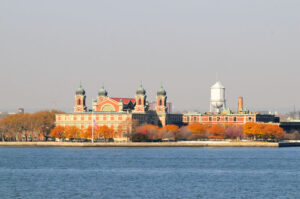 The diaspora that lead millions to America in general and New York in particular lead through one famous, thriving enclave for more than sixty years.
The diaspora that lead millions to America in general and New York in particular lead through one famous, thriving enclave for more than sixty years.
Beginning in 1892, immigrants coming to the Port of New York and New Jersey were all landed at the federal immigration station on Ellis Island. As many as 5,000 per day were processed through medical inspections, eligibility interviews, documentation checks, and other screenings.
Often, there were delays in this process. So for many immigrants, the first residence in the New World was the island itself.
Social workers working with the YWCA, YMCA, the Salvation Army, the Red Cross, and various other service organizations helped them acculturate… and became acculturated in turn. Even government inspectors working on the island learned, on average, three languages each to communicate with the new arrivals.
With food service, dormitories, and recreation spaces, Ellis Island was as much of a neighborhood for immigrants as any other in New York. After passing through the process, the new immigrants moved on to other enclaves… but not before leaving an indelible mark and taking a permanent place in American history on a tiny patch of land in New York Harbor.
Chinatown, the Largest Asian Enclave in the United States
New York’s Chinatown is only one among many throughout North America, but it’s estimated to be home to the highest concentration of ethnic Chinese individuals in the Western hemisphere. It’s also one of the oldest centers of Chinese population outside Asia, with the first immigrants arriving in the 1850s.
It’s also a rich experience for social workers in that Chinese ethnicity itself is a great melting pot of traditions and languages. Cantonese, Fuzhounese, and Mandarin can all be heard on the streets here.
Think!Chinatown is a great resource for learning the ins and outs of this historic neighborhood and the rich cultural history that comes with it. Blending arts, storytelling, and neighborhood engagement, it serves as the voice of the neighborhood through multi-lingual workshops and volunteer-powered programs.
There’s also Welcome To Chinatown, a nonprofit that aims to amplify and address the critical needs of businesses and individuals within the community.
While Chinatown has a rich historical trove of culture for social workers to access, it’s a field where you should also be constantly looking toward a better future. So it’s worth checking out Chinatown Connections, where the community is busy re-imagining and updating Chinatown for the 21st Century.
Flushing: A New Frontier for Asian-Americans
Flushing has its own Chinatown, a remnant of many that were once scattered across the Five Boroughs. But while others have dissipated a bit over the generations, Flushing is in the midst of a renaissance.
Since the 1970s, immigrants from Taiwan have brought the sound of Mandarin and a wealth of hot pot restaurants back to the streets of Flushing. As both the culinary and pan-Asian reputation of the neighborhood grew, more immigrants from all over China have arrived, soon making it one of the fastest-growing Chinatowns in the world. According to New York Times reports from 2019, some 30,000 Chinese immigrants live here today.
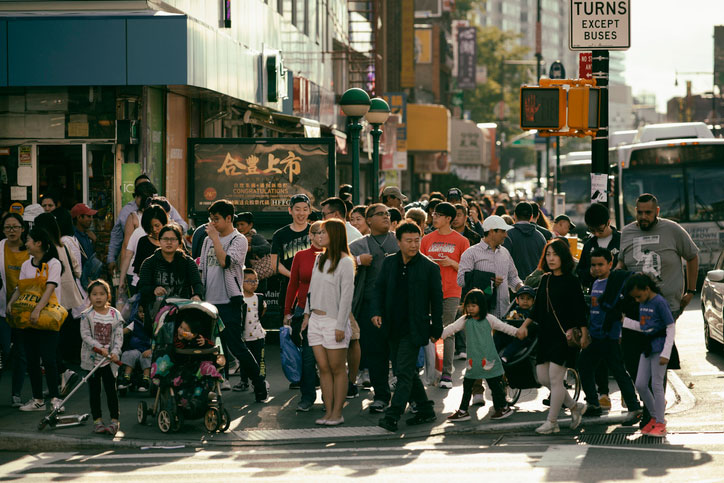
Koreans also make up increasing numbers of Flushing residents. This enclave is a little slice of the East in the heart of the West’s greatest metropolis, sometimes called the Chinese Times Square.
One way to get to know this thriving and expanding cultural enclave is with a visit to Flushing Town Hall. Part of the Cultural Institutions Group of New York and a Smithsonian affiliate, the home of Flushing Council on Culture and the Arts presents multi-disciplinary global arts for the engagement and education of the community. From jazz concerts to professional development workshops on budget management for dancers, it’s a unique slice of the Flushing pie.
Korean Community Services of Metropolitan New York serves more than just Flushing, but its influence is greatest here in the heart of Koreatown. With immigration and legal services, mental health clinics, workforce development, and adult daycare and senior centers, it delivers the services that the Korean community needs.
There’s no better way to develop cultural competency than by increasing your language skills to communicate with your clients. So the New York Taiwan Center should be on your Flushing community radar. Established in 1987 by the Taiwanese community to offer cultural, artistic, community, and educational activities, today it is a major provider of Mandarin language learning. You can hone your Mandarin skills through cultural experiences like a Taiwanese Shaved Ice Workshop or even immersive trips to Taiwan itself.
Washington Heights: Famous in Both Arts and Social Services Circles
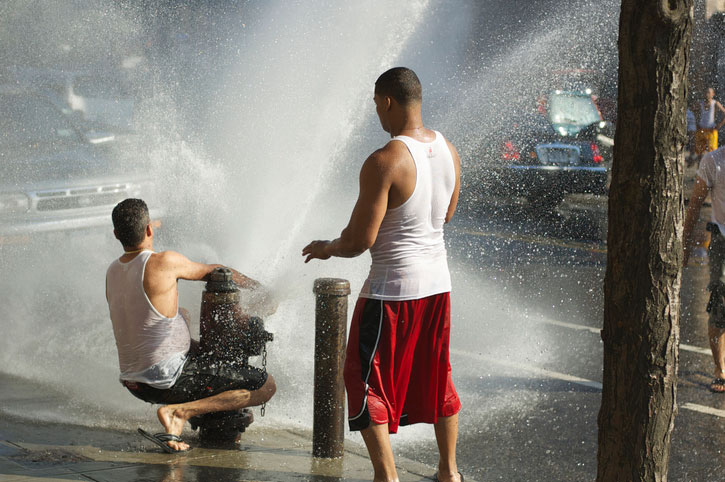
You’re more likely to hear Spanish on the streets of Washington Heights than any other language, and if immersion in Dominican and Latino culture is what you need, this is the place to be.
Long before it was the setting of Lin-Manuel Miranda’s musical In The Heights, Washington Heights was giving the word vibrant a distinctly New York meaning. Hardship and community spirit go hand in hand in this area, which has known booms and busts that included being the homicide capital of New York City in the early ‘90s.
The 1992 protests against the killing of Kiko Garcia by the NYPD brought the community together and has made it a case study in how solid community organizing and advocacy can allow minority communities to lift themselves up by their bootstraps.
To get a showcase of the Dominican culture that dominates here, the Alianza Dominican Cultural Center offers contemporary and classic arts, dance, and music from Dominica and Latin America. As a culture that thrives on musicality, this can be an important way to get in tune with clients from the neighborhood. The Center also delivers mental health and substance use disorder assessment and treatment planning.
To meet people where they live—and help them find places to live in the first place—there’s the Community League of the Heights. With a mission to help low-income people of color break the cycle of poverty, they lower the barriers of economic and social inequality for Washington Heights residents.
And because elders are often the repository of a community’s soul, getting involved with programs like the El Corazón NORC (Naturally Occurring Retirement Community) can offer priceless acculturation opportunities. Health and social services for seniors are needed in an aging neighborhood, and a program that helps keep them in place where they are already familiar with the unique Washington Heights vibe is a priceless contribution.
Jackson Heights, Where Native English Speakers May Be the Tiniest Minority
Jackson Heights’ claim to fame in the annals of New York ethnic enclaves is that it is no particular ethnic enclave at all. Instead, this may be the most diverse neighborhood in the most diverse city in the world. According to a New York Times report from 2020, the 180,000 residents here speak around 167 languages between them… a population that includes Tibetans, Latinos, Indians, and LGTBQ individuals of every color and creed.
It’s sometimes said that to know people, you have to know their cuisine. And you can find it at the Ittadi Bazaar, a restaurant and food store catering to Indian, Bengali, and Pakistani tastes, but serves the entire community. Everyone has to eat, and you can pick up a lot more than just lunch here while hanging out and chatting with local residents.
Gardening is something that brings people together almost as much as food. For that, the Jackson Heights Beautification Group offers a window into the neighborhood’s soul and its future. A grassroots non-profit that has its roots in more than grass, not only do volunteers maintain more than 18 different green spots, but also put on neighborhood parades, musical exhibitions, and community clean-ups.
Explore a Jewish Enclave Moving Eastward in Brighton Beach
Brighton Beach became a Jewish enclave during the Great Depression, as German Jews were fleeing the country. Later, after World War II, many found their homes here as Holocaust survivors sought a new beginning in America.
Even today, Brighton Beach is thought to have the largest population of concentration camp survivors in the U.S.
But the point of origins of immigrants here have shifted steadily east. Today, some of the most common languages are Slavic… Russians and Ukrainians call this neighborhood home in large numbers today.
The Brighton Neighborhood Association offers them assistance with quality-of-life issues from housing to senior care to youth services. It’s also a way for aspiring social workers to get a window into the lives of residents young and old, from every cultural background, through events like the Jubilee Festival and collections of resident memories and historic pictures of the neighborhood.
The Shorefront Jewish Community Council focuses on services for immigrants, the elderly, and economically disadvantaged Brighton Beach residents. With a classic set of social work services from case management to job training, it also accepts volunteers so you can get valuable on-the-ground experience with locals of every background.
Queens Village: The Minority Majority Neighborhood
Many of these neighborhoods are already in Queens, but for full immersion in cultural diversity, Queens Village takes the cake. According to a New York Times analysis, there are at least 100 people each from nine major ethnic groups in the neighborhood, and Forbes found that only a quarter of them belonged to the largest of those groups.
That’s how Queens Village earned the nickname of the World’s Village.
Of course, Queens Village is an essential piece of Queens itself, and many of the social services and cultural organizations that operate here also cover the borough as a whole. You can find traditional neighborhood houses here like Queens Community House, which make it their business to integrate with the multicultural community and engage with residents at their own level. Childcare, eldercare, and advocacy all draw social workers closer to the unique culture of the neighborhood.
The slogan for Commonpoint Queens is “Community happens here.” That’s where you want to be if you want to tap into the unique blend of cultures and perspectives that come from this neighborhood. Offering services from tennis classes to mental health treatment to a unique digital food pantry to deal with nutritional insecurity, Commonpoint touches the diverse needs of a diverse community. Here you’ll build connections through traditional Judaic values of kindness, social justice, inclusivity, and repairing the world.
A Neighborhood Within an Entire City: Cultural Competency Resources for New York’s LGBTQIA2S+ Population
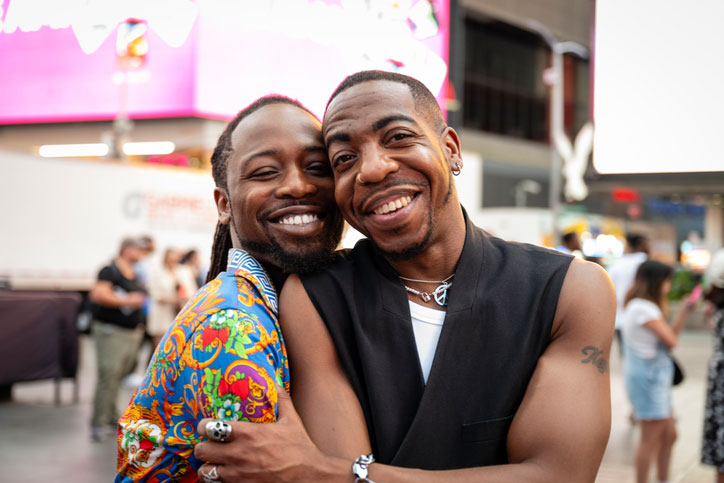
Greenwich Village, forever immortalized as the location of the Stonewall riots, may have once been the center of gay and lesbian culture in New York. With an estimated LGBT population in 2021 of over 700,000, NYC as a whole is a place to be to build cultural competency in the unique plight and concerns of a growing LGBTQIA2S+ community.
New York City is home to the highest number of married same-sex couples in the country.
It’s not just the city, either. New York as a whole is one of the most LGBTQIA2S+ friendly states in the nation. You’ll find that the state is a safe haven for people receiving gender-affirming care, allows gender reassignment on birth certificates with the option of no gender listed, and requires gender-neutral bathrooms. Equaldex, an organization that evaluates equality for LGBTQIA2S+ individuals globally, ranks New York 17 out of all U.S. States for equality and gives the state a 100/100 score for legal rights.
That makes this a great place to develop your gender-queer cultural competence. These are some of the resources to help you do it.
The Lesbian, Gay, Bisexual and Transgender Community Center is so central to the gay community of New York that it’s often just referred to as The Center. It was originally established at the height of the AIDS crisis in New York to provide a place for support and affirmation during a life-threatening episode.
Since then, it’s grown and broadened to deal with new ways to help LGBTQIA2S+ individuals lead healthy, successful lives through mental health services, youth programs, substance use recovery, and assistance to immigrants. Social workers can refer to these services or develop their cultural appreciation for all things LGBTQIA2S+ through the vast LGBT Community Center National History Archive or permanent collections of artwork by LGBTQIA2S+ artists.
While business isn’t the first thing that social workers think about when they think about culture, it’s important to normalize the everyday experience of people who live lives unique from your own. The National LGBT Chamber of Commerce – New York chapter is one innovative way to approach that challenge. Through monthly mixers and guides to local LGBTQIA2S+ owned businesses, you can get a picture of how people in the local queer community are making a living and building businesses that provide job opportunities for other folks. The organizations Engagement Center is a resource for business working on their own diversity and inclusion efforts.
Cultural Competency Resources for Social Workers Throughout New York
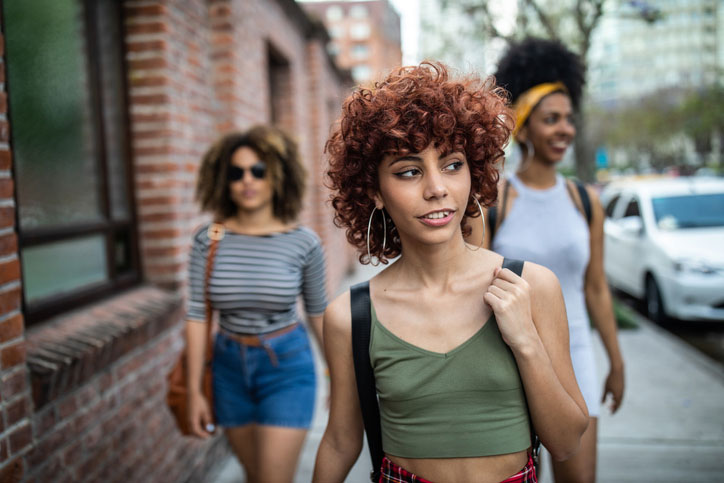
The reality that social workers quickly encounter is that there are no real boundaries to culture in New York City or even in New York State. Individuals from every country in the world with every sort of cultural background are scattered all through the state. So sometimes you’ll look for developing cultural competency with a broader brush than just neighborhood resources. Check out these state or even national options for a more general perspective.
Center of Excellence for Cultural Competence
There’s no reason not to make this Manhattan fixture, funded by the New York State Office of Mental Health and located at the New York State Psychiatric Institute, the first step in your cultural competency journey. On top of a comprehensive catalog of resources, the ongoing research conducted at CECC makes it the place for the latest concepts and techniques for cultural competency.
The National Association of Social Workers
Often, your best bet for a unique social work perspective is going to be your fellow social workers. You’ve got strong support throughout New York, and the country, in that respect from the National Association of Social Workers.
You’ll also find even more locally-focused cultural competency training and resources through the New York City and New York state chapters of NASW. Engaged in advocacy on behalf of both social workers and their client populations, these organizations get you involved at the grassroots level and build connections with local cultural communities.
New York State Developmental Disabilities Planning Council
Not all cultural competency revolves around ethnic, racial, or linguistic backgrounds. In many ways, it can be even more difficult for social workers to bridge the gap with differently abled clients than those from other cultures. Yet there is less attention on and fewer resources for developing this kind of cultural competency than any other.
So the emphasis of DDPC on embedding cultural and linguistic competency through all their work is a gift to social workers throughout the state. The Council emphasizes that culture can include:
- Language
- Values and beliefs
- Attitudes
- Religion
- Communication style
- Home or community
- Foods
There are subcultures in the country that include people of every sort of background, joined through shared adversity in dealing with the challenges of disability.
A cultural competency workgroup reviews everything from diversity and inclusion planning goals to grant initiatives for cultural competency purposes.
Partner agencies and organizations include:
- Chinese-American Planning Council
- Disability Rights New York
- Ibero-American Action League
- Office for People with Developmental Disabilities
- Rose F. Kennedy Children’s Evaluation and Rehabilitation Center
- Strong Center for Developmental Disabilities
- Westchester Institute for Human Development
Native American Community Services of Erie & Niagara Counties
Maybe the most overlooked minority in New York is the one that was here before all the others: Native Americans. Largely displaced, heavily oppressed, yet surviving and even thriving with dignity and adaptability, this isn’t a group that many social workers will spend much time studying in class. So cultural competency trainings from native organizations like the upstate NACS can be invaluable.
Your own path to cultural competency in social work begins as soon as your are born, and continues until you pass on. But the work you put into it by taking advantage of these resources and others you find as a professional in New York’s diverse, inclusive human services environment will help you accomplish more, faster, than you ever will on your own.
